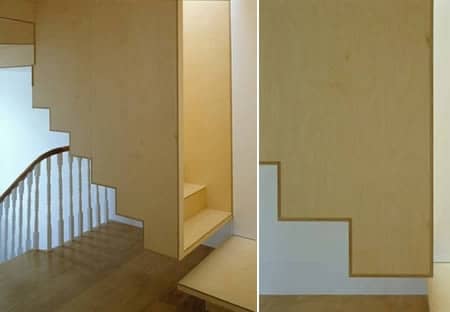

And finally, stairs for your inner child 😉
If you enjoyed this post you’ll certainly enjoy these other ‘Just For Fun’ posts!



And finally, stairs for your inner child 😉
If you enjoyed this post you’ll certainly enjoy these other ‘Just For Fun’ posts!
Washington D.C. – August 12, 2020 (nar.realtor) The overwhelming majority of the nation’s metro areas witnessed home prices rise in the second quarter of 2020, according to the latest quarterly report by the National Association of Realtors®.

Median single-family home prices rose year-over-year in 96% of measured markets in the second quarter, with 174 of 181 metropolitan statistical areas1 showing sales price gains. That is identical to the percentage of metro areas in the first quarter that had price gains. The national median existing single-family home price in the second quarter of 2020 was $291,300. On a year-over-year basis, this is a 4.2% climb, however, it is still a slower pace of appreciation compared to the pre-pandemic rate of 7.7% in the first quarter.
“Home prices have held up well, largely due to the combination of very strong demand for housing and a limited supply of homes for sale,” said Lawrence Yun, NAR chief economist. “Historically-low inventory continues to reinforce and even increase prices in some areas.”
Fifteen metro areas experienced double-digit price growth, including Huntsville, Ala. (13.5%); Memphis, Tenn. (13.4%); Boise, Idaho (12.6%); Spokane-Spokane Valley, Wash. (11.8%), Indianapolis, Ind. (10.8%), and Phoenix, Ariz. (10.2%).
Yun says that the record-low mortgage rates will undoubtedly continue to attract new buyers, but that more homes are needed. “Unless an increasing number of new homes are constructed, some buyers could miss out on the opportunity to purchase a home or have the opportunity delayed,” he said. “In the meantime, prices show no sign of decreasing.”
San Jose, Calif. maintained its place as the most expensive metropolitan area in the country during the second quarter and showed price gains from one year ago ($1.38 million; 3.8%). Neighboring San Francisco, Calif. was second place at $1.05 million (price unchanged), followed by Anaheim, Calif. ($859,000; 2.9%), Urban Honolulu, Hawaii ($815,700, 3.8%) and San Diego, Calif. ($670,000; 2.3%).
“This last quarter showed heavy buyer activity in less occupied areas when compared to highly populated cities such as San Francisco, New York, and Washington, D.C., related in part to the longer shutdowns in these cities,” said Yun. “In the midst of the pandemic, some buyers are looking for housing in less crowded and more affordable metros.”
In about a third of the measured metro areas, the median home prices were below $200,000. This includes Topeka, Kan. ($147,800), Springfield, Ill. ($153,800), Shreveport, La. ($162,300), Cleveland, Ohio ($177,300), and Columbia, S.C. ($199,100).
As Yun noted, home prices have been rising due to the low number of homes for sale. At the end of the second quarter, 1.57 million existing homes were available for sale,2 18.2% lower than total inventory at the end of 2019’s second quarter. As of June 2020, housing inventory totals were equivalent to 4.0 months at the current sales pace.
The effective 30-year fixed mortgage rate3 averaged 3.29% in the second quarter of 2020, down from one year ago (4.08%) and from the first quarter of 2020 (3.57%).
The monthly mortgage payment on a typical home purchase that is financed with a 30-year fixed-rate mortgage and a 20% down payment rose slightly to $1,019 compared to $995 in the first quarter. However, this total is still below the level seen one year ago, $1,078.
“Although housing prices have consistently moved higher, when the favorable mortgage rates are factored in, an overall home purchase was more affordable in 2020’s second quarter compared to one year ago,” said Yun.
A household with a median family income of $82,471 spent 14.8% of its income on mortgage payments. This is less than the fraction of income spent on housing in the prior quarter (15.1%) and one year ago (16.4%). Housing expenses are considered a cost burden if they consume more than 30% of income.
In a scenario where families spent no more than 25% of income on mortgage payments – given it was a 30-year fixed-rate mortgage, with a 20% down payment – the median family income needed to pay for that mortgage would have been $48,912.
In 130 of the 181 metro areas, a family needed less than $50,000 to afford a home in the second quarter of 2020, assuming a 20% down payment. However, in the most expensive metro areas, a family needed more than $100,000 to afford a home including in San-Jose-Sunnyvale ($233,828), San Francisco ($177,913), Anaheim ($145,550), Urban Honolulu ($138,213), San Diego ($113,525) and Boulder ($102,800).
The National Association of Realtors® is America’s largest trade association, representing more than 1.4 million members involved in all aspects of the residential and commercial real estate industries.
# # #
NOTE: NAR releases quarterly median single-family price data for approximately 175 Metropolitan Statistical Areas (MSAs). In some cases, the MSA prices may not coincide with data released by state and local Realtor® associations. Any discrepancy may be due to differences in geographic coverage, product mix, and timing. In the event of discrepancies, Realtors® are advised that for business purposes, local data from their association may be more relevant.
Data tables for MSA home prices (single-family and condo) are posted at https://www.nar.realtor/research-and-statistics/housing-statistics/metropolitan-median-area-prices-and-affordability. If insufficient data is reported for an MSA in a particular quarter, it is listed as N/A. For areas not covered in the tables, please contact the local association of Realtors®.
1 Areas are generally metropolitan statistical areas as defined by the U.S. Office of Management and Budget. NAR adheres to the OMB definitions, although in some areas an exact match is not possible from the available data. A list of counties included in MSA definitions is available at: https://www.census.gov/geographies/reference-files/time-series/demo/metro-micro/delineation-files.html(link is external).
Regional median home prices are from a separate sampling that includes rural areas and portions of some smaller metros that are not included in this report; the regional percentage changes do not necessarily parallel changes in the larger metro areas. The only valid comparisons for median prices are with the same period a year earlier due to seasonality in buying patterns. Quarter-to-quarter comparisons do not compensate for seasonal changes, especially for the timing of family buying patterns.
Median price measurement reflects the types of homes that are selling during the quarter and can be skewed at times by changes in the sales mix. For example, changes in the level of distressed sales, which are heavily discounted, can vary notably in given markets and may affect percentage comparisons. Annual price measures generally smooth out any quarterly swings.
NAR began tracking of metropolitan area median single-family home prices in 1979; the metro area condo price series dates back to 1989.
Because there is a concentration of condos in high-cost metro areas, the national median condo price often is higher than the median single-family price. In a given market area, condos typically cost less than single-family homes. As the reporting sample expands in the future, additional areas will be included in the condo price report.
The seasonally adjusted annual rate for a particular quarter represents what the total number of actual sales for a year would be if the relative sales pace for that quarter was maintained for four consecutive quarters. Total home sales include single-family, townhomes, condominiums and co-operative housing.
2 Total inventory and month’s supply data are available back through 1999, while single-family inventory and month’s supply are available back to 1982 (prior to 1999, single-family sales accounted for more than 90% of transactions and condos were measured only on a quarterly basis).
Seasonally adjusted rates are used in reporting quarterly data to factor out seasonal variations in resale activity. For example, sales volume normally is higher in the summer and relatively light in winter, primarily because of differences in the weather and household buying patterns.
3 This is the effective mortgage rate based on Freddie Mac’s 30-year fixed contract rate mortgage and points and fees.
Washington, D.C. – August 12, 2020 (nar.realtor) The National Association of Realtors® announced the promotion of Andréa Moore to vice president of Diversity, Inclusion and Talent Opportunity. Moore will be responsible for NAR’s:

“Diversity, equity and inclusion are core values of NAR and Andréa’s promotion reflects our steadfast commitment to those principles,” said NAR CEO Bob Goldberg. “Andréa’s expertise, work ethic and dedication will ensure that we attract and retain a workforce within an environment where not only talent and experience are valued, but where individual differences are celebrated.”
Moore started her NAR career in April 2017 as director of Talent Development and Resources. Over the last three years, she adjusted NAR’s recruitment strategy and practices to expand applicant pools. Moore also led several NAR internal staff diversity and inclusion efforts, including training for senior leaders, and creating an employee diversity and inclusion workgroup and commitment statement.
“Andréa’s professionalism and achievements have made NAR a better place to work for all of us – from new employees to those with decades of tenure,” said Donna Gland, NAR senior vice president of Talent Development and Resources. “I look forward to working with Andréa in her new role as an essential function within our team and watching her continued growth and leadership for years to come.”
Moore has 12 years of human resources experience, including a Senior Professional in Human Resources® certification from the HR Certification Institute® and a SHRM-Senior Certified Professional certification from the Society for Human Resource Management. Prior to joining NAR, Moore spent four years as human resources director at the National Council for Behavioral Health, a Washington, D.C. based 501(c)3, where she was hired to create a human resources department as the organization experienced rapid growth. Moore wrote and maintained the organization’s Affirmative Action Plan and staffed the Board’s inaugural advisory group tasked with improving the Board’s diversity. Moore started her human resources career at the Target Corporation and also spent time with the Hyatt Corporation.
In her new role, Moore will work in close collaboration with Bryan Greene, NAR’s director of Fair Housing, and Fred Underwood, NAR’s director of Engagement, Diversity and Inclusion. These roles further NAR’s commitment by advocating for policies that advance fair housing and providing strategic resources for all Realtor® associations to embrace diversity and inclusion in their membership and leadership systems.
The National Association of Realtors® is America’s largest trade association, representing more than 1.4 million members involved in all aspects of the residential and commercial real estate industries.